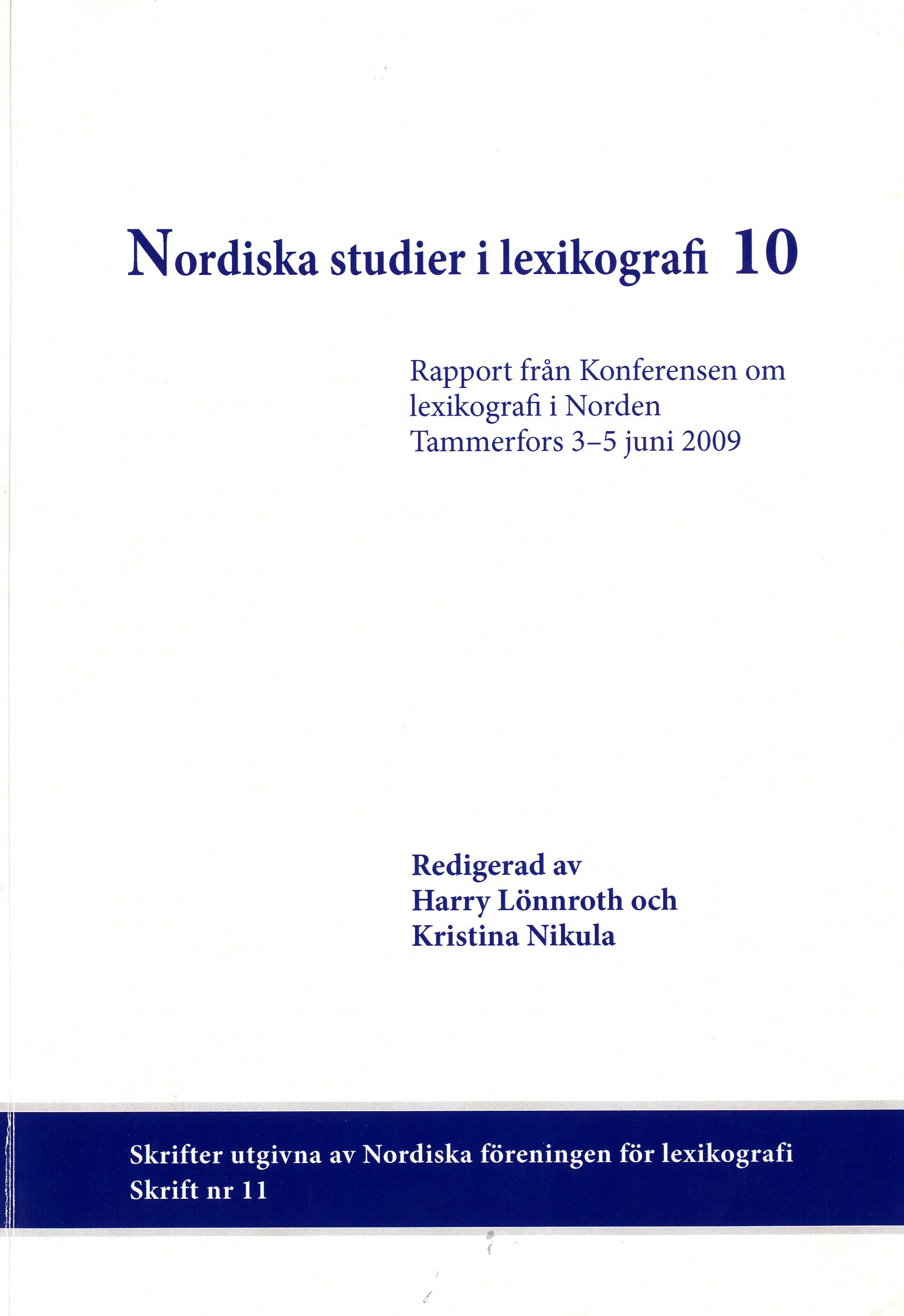Om navn på språk i ordbøker
Keywords:
språknavn, holdninger til språk, definisjonstypeAbstract
This article contains some remarks and a preliminary analysis of language names in dictionaries. In addition to a short discussion of lemma selection and orthography, the main focus is on how different definitions, that appear in language name lemmas in monolingual dictionaries, may throw light on the relationship between the culture of which a particular monolingual dictionary is a part, on the one hand, and a particular language on the other. Three definition types are delimited for the present purposes: 1) language X: ‘the language of the people Y’, 2) language X: ‘the [ADJ] language’, 3) language X: ‘the language of state Z / geographical area Z’. Eight language names, Danish, English, Hungarian, Japanese, Quechua, Sami, Swahili, and Tamil were looked up, in four monolingual dictionaries: the Faroese Føroysk orðabók (1998), the Icelandic Íslensk orðabók (2007), the Norwegian Bokmålsordboka (1986), and the Swedish Svensk ordbok (1986). One of the conclusions of this investigation is that even if these dictionaries use different definition types, they consistently treat the language names Danish, English, Hungarian and Japanese in the same manner. The three languages that are “culturally more remote” from the Nordic countries, are, along with Sami, never defined with the help of an adjective and never with reference to their official status.
Downloads
Published
How to Cite
Issue
Section
License
Nordisk Forening for Leksikografi/NSL og forfatterne.





